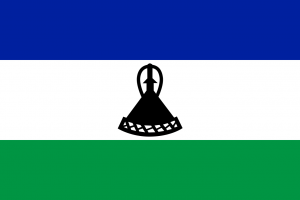Difference between revisions of "Language/Southern-sotho/Grammar/How-to-Use-Be"
m (Quick edit) |
m (Quick edit) |
||
| Line 100: | Line 100: | ||
<hr>➡ If you have any questions, please ask them in the comments section below.<br>➡ Feel free to edit this wiki page if you think it can be improved. 😎 | <hr>➡ If you have any questions, please ask them in the comments section below.<br>➡ Feel free to edit this wiki page if you think it can be improved. 😎 | ||
==Related Lessons== | |||
* [[Language/Southern-sotho/Grammar/Pronouns|Pronouns]] | |||
* [[Language/Southern-sotho/Grammar/Plurals|Plurals]] | |||
* [[Language/Southern-sotho/Grammar/Conditional-Mood|Conditional Mood]] | |||
* [[Language/Southern-sotho/Grammar/Adjectives|Adjectives]] | |||
* [[Language/Southern-sotho/Grammar/Questions|Questions]] | |||
* [[Language/Southern-sotho/Grammar/Future-Tense|Future Tense]] | |||
* [[Language/Southern-sotho/Grammar/Negation|Negation]] | |||
{{Southern-sotho-Page-Bottom}} | {{Southern-sotho-Page-Bottom}} | ||
Revision as of 12:12, 1 March 2023
Hi Southern Sotho learners! 😊
In this lesson, we will learn how to use the verb "be" in Southern Sotho. We will look at the different forms of the verb and how to use them in sentences.
Introduction
The verb "be" is one of the most important verbs in any language. In Southern Sotho, it is used to express existence, identity, location, and other states of being. It is also used to form the passive voice. In this lesson, we will look at the different forms of the verb "be" and how to use them in sentences.
Forms of the Verb "Be"
The verb "be" has three forms in Southern Sotho:
- Ke (present tense)
- Ba (past tense)
- Ka (future tense)
Present Tense
The present tense of the verb "be" is ke. It is used to express existence, identity, location, and other states of being in the present.
| Southern Sotho | Pronunciation | English Translation |
|---|---|---|
| Ke nna | ke n-na | I am |
| Ke mme | ke mm-e | We are |
| Ke tona | ke t-ona | You are (singular) |
| Ke banna | ke b-anna | You are (plural) |
| Ke oona | ke o-ona | They are |
Here are some examples of how to use the present tense of the verb "be" in sentences:
- Person 1: Ke nna lebokose. (I am a teacher.)
- Person 2: Ke tona lebokose. (You are a teacher.)
- Person 3: Ke banna lebokose. (You all are teachers.)
- Person 4: Ke oona lebokose. (They are teachers.)
Past Tense
The past tense of the verb "be" is ba. It is used to express existence, identity, location, and other states of being in the past.
| Southern Sotho | Pronunciation | English Translation |
|---|---|---|
| Ba nna | ba n-na | I was |
| Ba mme | ba mm-e | We were |
| Ba tona | ba t-ona | You were (singular) |
| Ba banna | ba b-anna | You were (plural) |
| Ba oona | ba o-ona | They were |
Here are some examples of how to use the past tense of the verb "be" in sentences:
- Person 1: Ba nna lebokose. (I was a teacher.)
- Person 2: Ba tona lebokose. (You were a teacher.)
- Person 3: Ba banna lebokose. (You all were teachers.)
- Person 4: Ba oona lebokose. (They were teachers.)
Future Tense
The future tense of the verb "be" is ka. It is used to express existence, identity, location, and other states of being in the future.
| Southern Sotho | Pronunciation | English Translation |
|---|---|---|
| Ka nna | ka n-na | I will be |
| Ka mme | ka mm-e | We will be |
| Ka tona | ka t-ona | You will be (singular) |
| Ka banna | ka b-anna | You will be (plural) |
| Ka oona | ka o-ona | They will be |
Here are some examples of how to use the future tense of the verb "be" in sentences:
- Person 1: Ka nna lebokose. (I will be a teacher.)
- Person 2: Ka tona lebokose. (You will be a teacher.)
- Person 3: Ka banna lebokose. (You all will be teachers.)
- Person 4: Ka oona lebokose. (They will be teachers.)
Conclusion
In this lesson, we have learned how to use the verb "be" in Southern Sotho. We have looked at the different forms of the verb and how to use them in sentences. To improve your Southern Sotho Grammar, you can also use the Polyglot Club website. Find native speakers and ask them any questions!
➡ If you have any questions, please ask them in the comments section below.
➡ Feel free to edit this wiki page if you think it can be improved. 😎
Related Lessons
